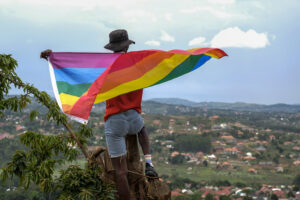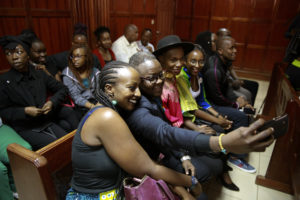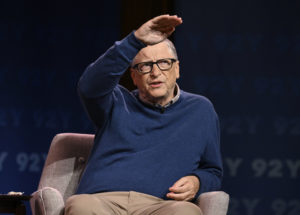2015 in Review: Truthdig’s Books of the Year
A look back at some of our favorites from the reading stack. Pixabay
1
2
Pixabay
1
2
6. House Keys Not Handcuffs, by Paul Boden (Freedom Voices)
As reviewer Paul Von Blum notes, “ ‘House Keys Not Handcuffs’ by Paul Boden, a dramatic and disconcerting book on homeless organizing, art and policy in San Francisco and elsewhere, begins with this personal quotation that puts homelessness in the compelling human perspective it demands: ‘Holy shit, it is time to go home and I got no where to go.’ …
“By emphasizing house keys instead of handcuffs in the title, Boden deliberately asks his readers to understand that the homeless need homes and serious social and public health services, not arrests, prosecution, police harassment and the continuing criminalization of the poor in America. This is a central theme of this powerful volume.”
The book “is a persuasive reminder of the tremendous work that remains to be done to close the gap between American ideals and American realities. Paul Boden ruefully notes at the book’s conclusion that the government never stopped investing in housing; it merely stopped investing in housing for the poor. Boden and fellow homeless advocates know that there is a desperate need for federal funding for affordable housing. Beyond that, more fundamental systemic change is required to end homelessness and provide the educational, employment, health care and other services that a decent and humane society should guarantee to everyone. This book represents a small but valuable step in generating that consciousness.”
7. Hacker, Hoaxer, Whistleblower, Spy: The Many Faces of Anonymous, by Gabriella Coleman (Verso)
“We’ve reached a curious moment in the digital revolution,” says reviewer Peter Richardson. “The surveillance state has harnessed the very technologies that were supposed to liberate us. High-tech corporations have made that surveillance easier and more efficient. A handful of organizations are fighting to protect civil liberties in cyberspace, but especially in the aftermath of 9/11, the federal government has successfully and repeatedly invoked the national security card to weaken protections against illegal searches. Meanwhile, hackers are probing weaknesses in websites and databases and selling their results on the underground market—often to governments, especially ours.
“Against this backdrop, Gabriella Coleman’s new book, ‘Hacker, Hoaxer, Whistleblower, Spy: The Many Faces of Anonymous,’ considers the shadowy world of Anonymous, a loosely defined online community that has targeted corporations and governments guilty of perceived offenses against digital liberty. Originally driven by the desire for laughs (‘lulz,’ in the online argot), its members have specialized in shutting down websites and revealing embarrassing personal information about their targets. Trained as an anthropologist, Coleman spent years infiltrating and studying the group’s inner circles and customs. …
“In her conclusion, Coleman places the Anonymous story alongside the sagas of Julian Assange, Chelsea Manning and Edward Snowden. She also quotes a former U.S. official on Snowden’s flight to Russia to seek political asylum. The Israelis, this official told an audience at an international conference on defense and security, said that Snowden ‘should have never been allowed to get on that plane.’ If they had been in charge, the Israelis continued, ‘the plane would have never landed.’ After the uproarious laughter subsided, the U.S. official added, ‘I still might subscribe to their point of view.’ Not a word, of course, about the government overreach that Snowden’s leak revealed.
“In Laura Poitras’ 2014 documentary, ‘Citizenfour,’ Snowden comes off as principled, purposeful and sober. In contrast, many of Coleman’s subjects seem callow, mischievous or both. But their story raises issues closely related to Snowden’s case. Coleman’s book is important not only for its insight into the world of Anonymous, but also for illustrating the broader tension between unchecked government and corporate power and the stubborn urge to protect our civil rights and liberties, including privacy, in the digital age.”
8. The Complete Works of W.H. Auden: Prose: Volumes V and VI, edited by Edward Mendelson (Princeton University Press)
“Where,” asks reviewer Michael Dirda, “should the praise go for this magnificent edition of W.H. Auden’s prose, now rounded off by its final two volumes? To the great Anglo American poet himself for having produced such incisive and memorable criticism? To Edward Mendelson, whose scrupulous editing calls to mind Samuel Beckett’s phrase ‘No author better served’? Or to designer Jan Lilly and the Princeton University Press for the elegance and beauty of the books themselves? One thing is certain: This is what scholarly publishing is meant to be. …
“In short, here is God’s plenty, 4,000 pages in which to lose oneself as one does in, say, Boswell’s ‘Life of Johnson’ or Henry Mayhew’s ‘London Labour and the London Poor.’ Auden’s judgment of the latter—a classic of 19th-century reporting and oral history—could be readily applied to his own collected prose: ‘It is a book in which one can browse for a lifetime without exhausting its treasures.’ When Nobel laureate Joseph Brodsky called Auden ‘the greatest mind of the 20th century,’ he may have exaggerated—but not by much.
“Published in tandem, the last two volumes of the collected prose cover the final decade of Auden’s life (he died at 66 from a heart attack). In his introduction to Volume V, Mendelson aptly sums them up:
” ‘Auden’s essays and reviews in the last dozen years of his life are most vivid and memorable when he writes explicitly about others’ lives or elliptically about his own. He was especially fascinated by artists and writers who were more or less monstrous or obsessive, who exemplified intellectual temptations that he himself had experienced and refused (Goethe, Kierkegaard, Wagner). He enjoyed writing about the saintly (Henry Mayhew, Dorothy Day), the aesthetic (Oscar Wilde, A.E. Housman, Max Beerbohm), and the sexually eccentric (J.R. Ackerley, Denys Munby). He wrote enthusiastically about the byways of Christian theology and classical myth.’
“… in the case of Auden’s collected prose, ‘undiluted enthrallment’ seems very close to the truth.”
9. The Buried Giant, by Kazuo Ishiguro (Knopf)
“There are authors who write in tidy, classifiable, immediately recognizable genres—Jane Austen, Alexandre Dumas, William Faulkner, Gabriel Garcia Marquez, to name a few—and then there are those who adamantly do not. These others,” writes reviewer Marie Arana, “can surprise us with storylines and settings that are guises to be worn and shucked after the telling. Masters of reinvention, they slip from era to era, land to land, changing idioms, adapting styles, heedless of labels. They are creatures of a nonsectarian world, comfortable in many skins, channelers of languages. What interests them above all in their invented universes is the abiding human heart. …
“And so we come to ‘The Buried Giant,’ a spectacular, rousing departure from anything Ishiguro has ever written, and yet a classic Ishiguro story. Set in the misty bogs and moors of England in A.D. 450, not long after the death of King Arthur, the novel is a daring venture into a medieval wilderness of monsters, pixies, dragons, wizards, aging knights and sword-swinging, sanguinary warriors. …
“It would be too easy to call what Ishiguro is undertaking ‘fantasy’ or ‘magical realism.’ Critics will summon such phrases to describe this book, but they would be wrong to do so. Such facile labels—suggesting that the author is relying on literary devices pulled from old bags of tricks—have no meaning here. Instead, what we are given in ‘The Buried Giant’ has the clear ring of legend, as graceful, original and humane as anything Ishiguro has written. By the end of it, we are made to see that a dark grain can enter our collective bloodstream and poison it with a baffling hate. Even the tender love that Axl and Beatrice feel for each other comes under scrutiny as they go. For all the old couple’s efforts to remember, Ishiguro seems to say, some things are best forgotten: Betrayals in a long-suffering marriage can be as devastating as the human impulse to war.”
“ ‘Are you still there, Axl?’ ” says Beatrice, picking her way along a rough, narrow mountain path.
“ ‘Still here, princess,’ ” he answers, trudging behind her.”
The reviewer ends by writing:
“Forgetting, you see, can bring a higher level of grace.
“All the same, I’ll wager you won’t soon forget this book after turning its last pages. The close, in particular, will haunt.”
10. This Nonviolent Stuff’ll Get You Killed: How Guns Made the Civil Rights Movement Possible, by Charles E. Cobb Jr. (Basic Books)
“For several decades,” reviewer Paul Von Blum writes, “I have taught the civil rights movement extensively in my UCLA class on the history of American social protest movements. I detail its effective use of nonviolence to challenge racist practices and white supremacy and to gain high moral visibility in major media outlets throughout the world. To the distress of many of my students, I also note that most civil rights activists, including myself, considered nonviolence merely a useful and moral tactic, but not a comprehensive way of life. Even more troubling, I proclaim my strong agreement with my fellow activists who respect and celebrate those who advocated and practiced self-defense whenever it was considered necessary.
“A major new book on the history of the civil rights movement validates this perspective—a perspective ordinarily missing from conventional accounts—and adds a huge dimension to public understanding of the dramatic and continuing struggle against racism in the United States. Despite the widespread belief that everything changed because Dr. Martin Luther King (majestically) preached and acted nonviolently, leading to a ‘nonracial society’ with the election of Barack Obama in 2008, the facts, as usual, are both more complex and more dismal.
“Charles Cobb, a veteran civil rights activist who served as a field secretary for the Student Nonviolent Coordinating Committee, has set the record straight with his powerful narrative about Southern grass-roots black individuals and groups who played essential roles in African-American resistance. He reveals how they acted to protect black people and their allies throughout the ages with the careful use of violent self-defense methods. Although some historians and many civil rights veterans know the stories of these individuals and groups, they are invisible to the public and even to much of the scholarly community. …
“Regrettably, the need for vigilant self-defense in African-American communities and the controversy of nonviolence versus violence cannot be confined to an issue of mere historical controversy. The deplorable reality, even now, is that government agencies charged with protecting the lives of all their people, including their black citizens, are woefully derelict in fulfilling their responsibilities. The recent homicides of Michael Brown in Missouri, Eric Garner in New York and Tamir Rice in Ohio at the hands of police authorities only highlight deeper problems of continuing institutional racism. It ill behooves privileged white Americans, including university students, to preach piously about nonviolence while black lives remain in great peril.”
Your support matters…
SUPPORT TRUTHDIG
Independent journalism is under threat and overshadowed by heavily funded mainstream media.
You can help level the playing field. Become a member.
Your tax-deductible contribution keeps us digging beneath the headlines to give you thought-provoking, investigative reporting and analysis that unearths what's really happening- without compromise.
Give today to support our courageous, independent journalists.






You need to be a supporter to comment.
There are currently no responses to this article.
Be the first to respond.